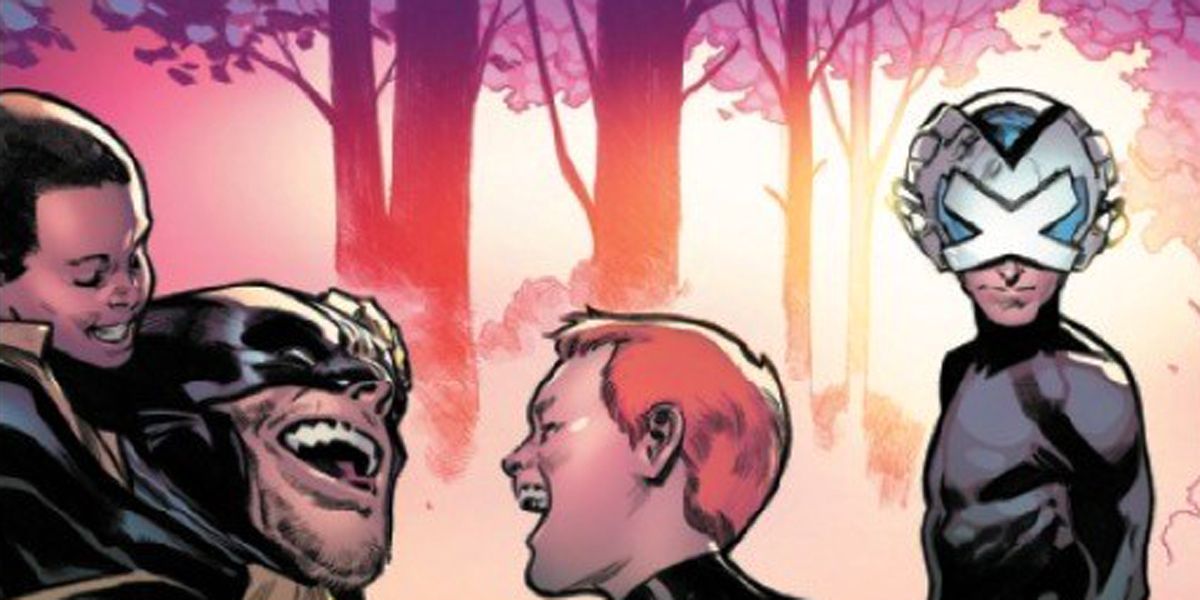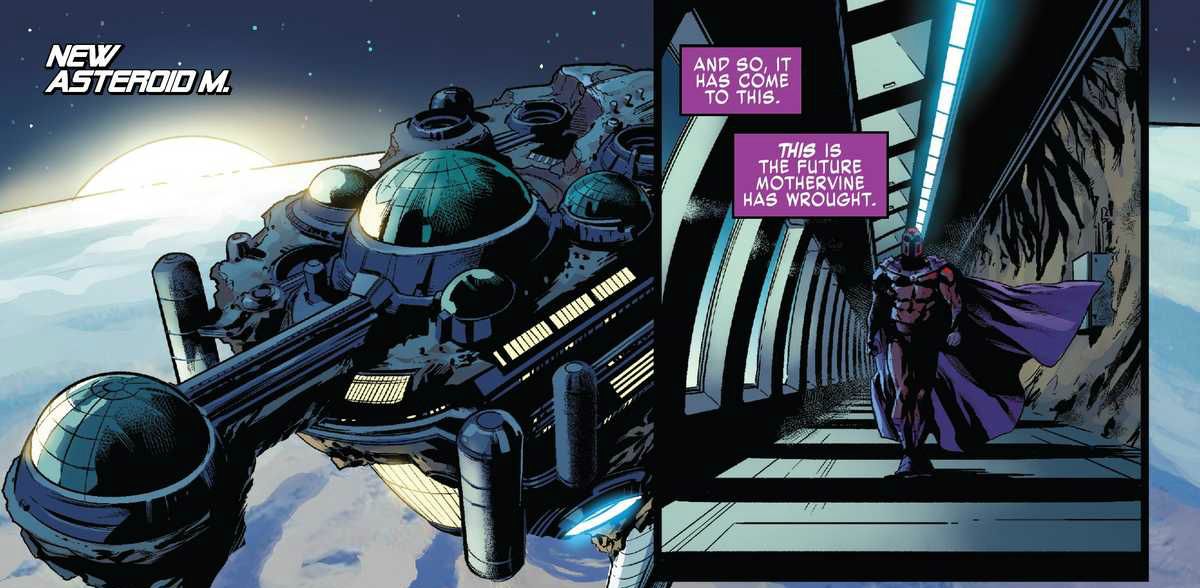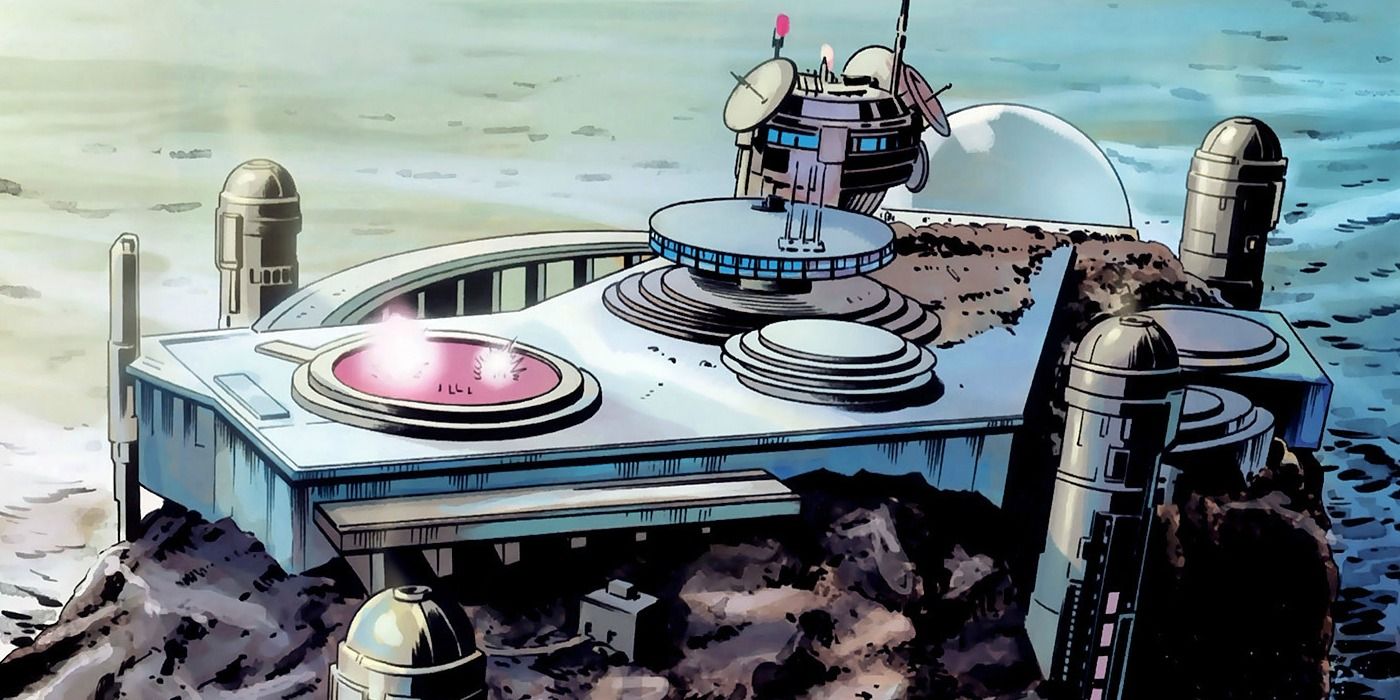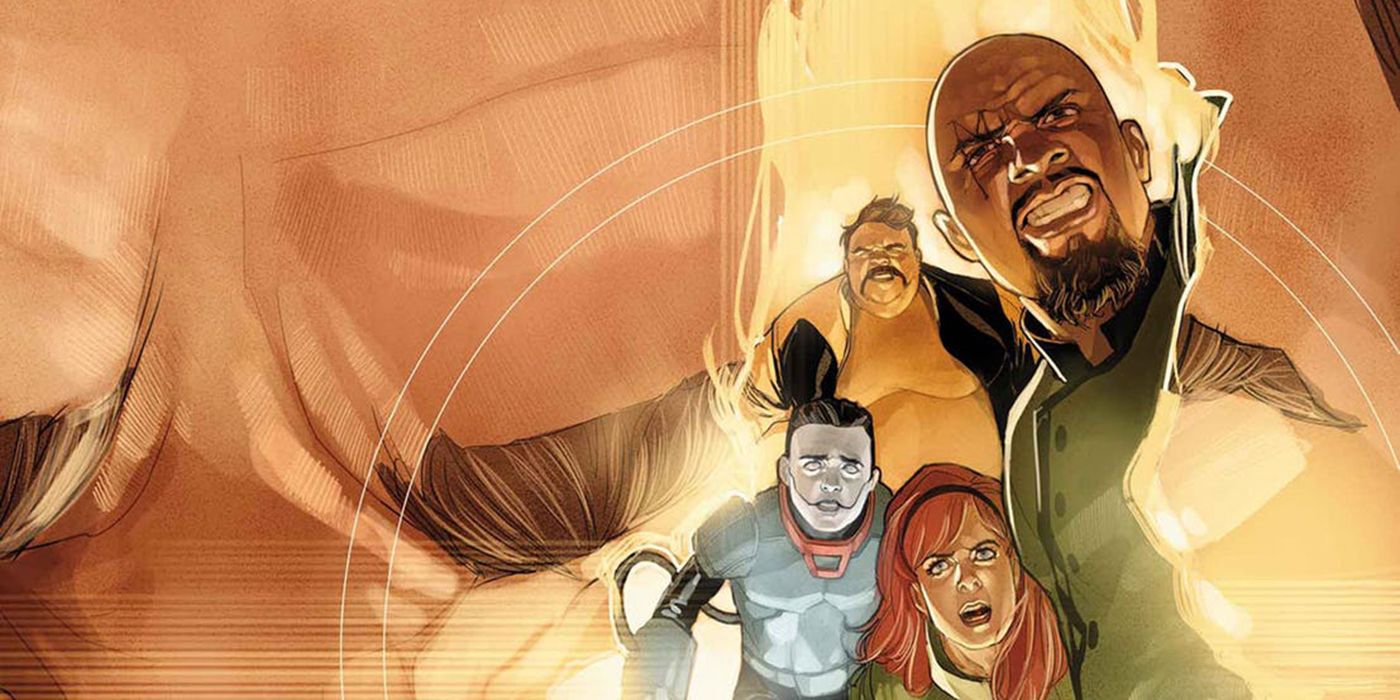Existence in the Marvel Comics Universe has never been kind to the X-Men or the wider mutant population. In a world that hates and fears them, most of Homo Superior has simply wanted to live their lives, whether by protecting Earth or in a more mundane capacity. In House of X, by writer Jonathan Hickman and artist Pepe Larraz, that appears to finally be a reality, thanks to Charles Xavier’s new plan.
His machinations seem twofold: The first involves using the living island of Krakoa to establish an independent nation for mutants. The second hinges on the island's resources, which allow Xavier to produce designer drugs that provide amazing benefits to humans. Using these drugs as leverage, Professor X has cemented mutantkind as a presence on the international stage, worthy of independence and respect.
As great as that all sounds, we’ve been here before. Mutantkind has tried just about every avenue to give itself reprieve from the terrible realities of prejudice. They’ve even had their own nation, similar to Krakoa, on multiple occasions. What was different, and how do they compare to Krakoa and Xavier’s new gambit? Let’s take a look.
MOVING OUT
Living on Earth as a mutant is difficult, even for those with money and fame. For all of Warren Worthington's wealth , he’s feared, just like the other X-Men. As much as Wolverine is an Avenger, and one of the most famous X-Men, he’s viewed as dangerous. So, on a planet where no one likes or trusts you, where can you go?
Magneto’s first solution was to abandon Earth entirely. Using his powers of magnetism, he created a habitat on an asteroid orbiting Earth. Known as Asteroid M, among other names, it served as a haven for mutants. However, that brought Magneto into conflict with Xavier, who believed running from Earth wasn't the answer, as mutants deserved to live there as much as humans. The dispute famously led to Magneto ripping the adamantium from Logan’s body and further fractured the mutant population.
Another instance in which moving mutants away entirely was on the table was during the X-Men’s conflict with the Inhumans. During Inhumans Vs. X-Men, the Terrigen mists threatened to end the lives of any mutant with whom they came into contact. That, coupled with the conflict over the sanctity of the clouds for the Inhuman populace, drove the X-Men into a desperate corner. Under orders, Magik helped transport the entire Jean Grey Institute to Limbo. Unable to indefinitely protect the mansion from the demons that reside there, the X-Men eventually returned to Earth.
POLITICAL SOLUTIONS
When leaving the planet or hiding elsewhere is no longer an option, there are other ways to try and coexist on Earth. One instance, involving Asteroid M, occurred around the time of the Dark Reign storyline. Magneto’s once-orbital habitat was brought to Earth and established its position off the coast of San Francisco. The X-Men, still reeling from the events of House of M and the greatly diminished number of mutants worldwide, banded together on this new island nation, known as Utopia.
Instead of finding a safe place to stay, the X-Men became the target of several anti-mutant groups, and the then-corrupt government, strong-armed by Norman Osborn's H.A.M.M.E.R. After fending off a never-ending list of enemies, including Bastion with his nimrod sentinels, Selene Gallio and the Dark Avengers, their time on Utopia came to an end when tensions between Cyclops and Wolverine split the team.
Prior to that, when the mutant population was growing healthily, they had their own nation known as Genosha. It was like any other country, with its own economy and sustainability. However, at the height of its prosperity, Cassandra Nova enacted a genocide on the country using her twisted Wild Sentinels, once again destroying hope for mutantkind’s independence.
NEW REALITIES
When they cannot leave the planet and they cannot exist upon it, some mutants decide to shape reality to force progress in the world. That requires incredibly powerful mutants in order to enact this kind of undertaking. The most famous instance was House of M, in which Scarlet Witch lost her mind and rearranged reality to create what she believed to be the ideal world, with Magneto at the figurehead. However, as her mental state deteriorated and some heroes fought to restore reality, the mutant population decimated further when Wanda cast a devastating spell with the words, “No more mutants.”
Mutantkind’s troubles with alternate utopian realities don’t end there. The next mutant to attempt to form a world where mutants wouldn’t be affected by outside influence was Legion. Unstable at the best of times, Legion created a contained world similar to Utopia, in a pocket dimension during the Age of X storyline. His mental state meant he couldn’t keep the dimension active forever. After conflicts began, he absorb all antagonistic personalities manifested back into himself and relinquished the X-Men to their proper reality.
Most recently, Nate Grey attempted to make a world in his own image. A rather strange take on a utopian environment, X-Man’s world saw the banishment of emotional and sentimental bonds. Emphasis was placed on the individual and the importance of not being clouded by attachments. Instead of traditional reproduction, mutants were grown in pod-like containers. Unfortunately for Nate, he was dying. Tears in the world began to appear, and the X-Men spirited away to his new world began to regain their memories, fighting against this artificial reality they found themselves in.




